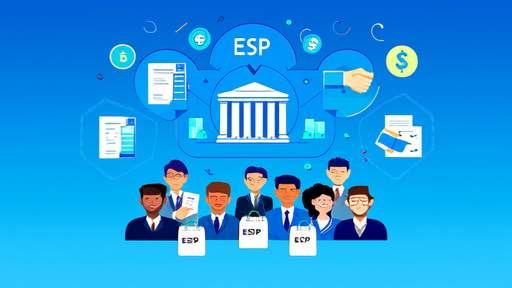The decentralized finance (DeFi) ecosystem has experienced explosive growth over the past few years, with lending protocols emerging as one of its most critical components. These platforms allow users to borrow and lend cryptocurrencies without intermediaries, relying instead on smart contracts to automate transactions. However, as the industry matures, the risks associated with smart contract vulnerabilities have become increasingly apparent. High-profile exploits have resulted in millions of dollars being drained from DeFi lending protocols, exposing weaknesses in their underlying code.
Smart contracts, while revolutionary, are not infallible. They are written by humans and, as such, can contain bugs or oversights that malicious actors can exploit. In the context of DeFi lending, these vulnerabilities can have catastrophic consequences. From reentrancy attacks to oracle manipulation, the range of potential exploits is vast. What makes these risks particularly concerning is the irreversible nature of blockchain transactions—once funds are stolen, they are nearly impossible to recover.
One of the most notorious examples of a DeFi lending exploit was the bZx attack in 2020. The protocol suffered two separate hacks within days, losing nearly $1 million in the first incident and over $6 million in the second. The attacks exploited a combination of flash loans and price oracle manipulation, highlighting how interconnected vulnerabilities can be leveraged for maximum damage. These incidents served as a wake-up call for the industry, prompting a closer examination of smart contract security.
The complexity of DeFi lending protocols creates multiple attack vectors. Unlike traditional financial systems where security is centralized, DeFi platforms must account for every possible interaction between smart contracts, external protocols, and user inputs. A single flaw in logic or an unanticipated edge case can undermine the entire system. For instance, some lending platforms have fallen victim to "infinite mint" exploits, where attackers manipulate token balances to borrow unlimited funds against non-existent collateral.
Another persistent challenge is the reliance on price oracles—external data feeds that provide asset valuations. Since DeFi protocols need accurate price information to determine loan collateralization ratios, compromised oracles can lead to disastrous outcomes. Attackers have repeatedly exploited delays in price updates or manipulated liquidity pools to create false pricing data. Some protocols have attempted to mitigate this by using multiple oracle sources or time-weighted average prices, but these solutions are not foolproof.
Even well-audited contracts can contain vulnerabilities. Many exploited DeFi lending platforms had undergone multiple security audits before their breaches. This demonstrates that while audits are essential, they cannot guarantee absolute safety. Auditors might miss subtle bugs or fail to anticipate novel attack methods. Furthermore, the rapid pace of DeFi innovation means that new features are constantly being added, potentially introducing fresh vulnerabilities faster than they can be identified and patched.
The rise of flash loans has added another layer of complexity to DeFi lending security. These uncollateralized loans, which must be borrowed and repaid in the same transaction, were intended to enable arbitrage opportunities. However, attackers have weaponized them to manipulate markets and exploit protocols. By combining flash loans with other vulnerabilities, hackers can execute sophisticated attacks that would otherwise require substantial capital, leveling the playing field between small-time attackers and well-funded exploiters.
Governance token vulnerabilities have emerged as another weak point. Many DeFi lending protocols use governance tokens to decentralize decision-making. While this aligns with DeFi's ethos, it also creates new risks. Attackers have exploited voting mechanisms to pass malicious proposals or have drained protocol treasuries by gaining disproportionate voting power. Some protocols have responded by implementing time locks on governance changes or requiring higher voting thresholds for sensitive decisions.
The human element remains one of the hardest vulnerabilities to address. Even with technically sound smart contracts, user errors or social engineering attacks can lead to significant losses. Phishing attacks targeting protocol administrators or users interacting with malicious front-end interfaces have become increasingly common. These attacks bypass smart contract security entirely, focusing instead on exploiting human psychology and the often-complex nature of DeFi interfaces.
Looking ahead, the DeFi lending space faces an ongoing battle between innovation and security. As protocols become more complex to support advanced financial products, their attack surfaces expand correspondingly. The industry is responding with improved development practices, formal verification methods, and decentralized security monitoring tools. However, the arms race between protocol developers and attackers shows no signs of slowing down. What remains clear is that smart contract security will continue to be a defining challenge for the future of decentralized lending.
The lessons from past exploits have led to some positive developments. Many protocols now implement bug bounty programs to incentivize white-hat hackers to report vulnerabilities. Insurance products specifically for smart contract risk have emerged, providing users with some protection against potential losses. Perhaps most importantly, there's growing recognition that security must be prioritized from the earliest stages of protocol design rather than treated as an afterthought.
As DeFi lending protocols evolve, their long-term success will depend on balancing innovation with robust security measures. The transparency of blockchain technology means that every exploit becomes a public case study that the entire industry can learn from. While perfect security may be unattainable, continuous improvement in smart contract development practices and security protocols can help mitigate risks. For users, understanding these vulnerabilities is crucial when participating in DeFi lending—the promise of high yields must always be weighed against the potential risks.

By /Jun 3, 2025

By /Jun 3, 2025

By /Jun 3, 2025

By /Jun 3, 2025

By /Jun 3, 2025

By /Jun 3, 2025

By /Jun 3, 2025

By /Jun 3, 2025

By /Jun 3, 2025

By /Jun 3, 2025

By /Jun 3, 2025

By /Jun 3, 2025

By /Jun 3, 2025

By /Jun 3, 2025

By /Jun 3, 2025

By /Jun 3, 2025

By /Jun 3, 2025

By /Jun 3, 2025

By /Jun 3, 2025

By /Jun 3, 2025